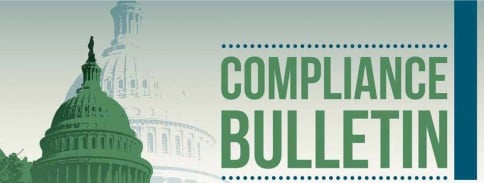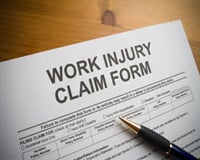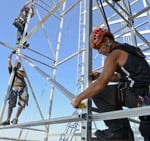Nearly 13,900 PG&E customers in Santa Cruz County woke up today to a dark Monday morning, as the utility shut-off power to over 350k customers in 36 counties beginning Sunday night.This is a preventive/safety measure to reduce the chances of utility equipment sparking a wildfire as the State of CA is experiencing unprecedented strong winds and low humidity levels.
The next time you experience a power disruption, take these steps to protect your home, valuables and family.
Call the power company. Report the outage and any downed lines, and sign up (online) to receive alerts when the power returns.
Check the circuit breakers. Be sure they’re turned to the “on” position so the power will automatically turn on when it’s restored.
Never touch downed lines. They’re deadly.
Use battery-operated flashlights or lanterns. Candles or oil lamps can be fire hazards, so rely on battery-operated light sources.
Stay warm during winter power outages. Bundle in layers, gather your family and pets in one room and shut the doors. You can also use your wood stove as a heat source if it’s clean and functions properly.
Stay cool during summer outages. Dress in lightweight clothing and hang out in the basement. You’ll also want to stay hydrated. If the power outage lasts for an extended time, drive to a mall, movie theater or other cool location.
Preserve food. In general, food will stay safe in the refrigerator for up to four hours and in the freezer for up to 48 hours, but try to avoid opening these appliances. Wrapping these appliances with blankets might provide further insulation and food protection during short outages.
Fill your water jugs if possible. Grab your spare containers and fill them with water to sustain you during the outage.
Turn on the water. Let your spigots drip to prevent freezing water pipes during winter outages.
Unplug major appliances. Your appliances could be damaged by the surge that sometimes occurs when the power comes back on, so unplug all your appliances and electronics except your fridge or freezer. Consider keeping a single lamp or other electric device plugged in so you know when the power is restored.
Use your generator with caution. Only turn on your generator if it’s installed outdoors, properly connected to your home and fueled properly.
Don’t grill indoors. The carbon monoxide could kill you.
Check on your neighbors. Verify that your neighbors are safe, especially if they’re elderly or disabled, and share any water or food with them.
Stock an emergency supply. After the power returns, prepare for the next outage. Stock non-perishable food, water, flashlights, batteries, a first aid kit, and pet and baby supplies, if necessary.
Review your homeowners insurance coverage. Your policy may cover food losses, power surge damages, burst pipes, and even hotel expenses that you incur because of a power outage. Contact your insurance agent for more details.
A power outage can occur at any time, so be prepared. These steps help you protect your home and your family.
Read more

The Contracting Classification Premium Adjustment Program (CCPAP) is a discount program that can reduce the amount that an employer pays in workers’ compensation premiums.
How does the CCPAP work?
The CCPAP was developed to provide a premium credit for employers in the contracting and construction industry who pay their employees higher than average wages. The CCPAP discount is calculated using the hourly rate of employees who are classified within the construction industry’s contracting class codes.
The system that is used to calculate workers’ compensation premiums groups employees according to risk. For each classification, the employer must pay a certain amount of workers’ compensation premiums based on every $100 of payroll. Since high wages amount to higher workers’ compensation premiums, employers use the CCPAP to lower their premiums to an amount more level with what they would be paying if they paid their employees less. With the CCPAP, employers aren’t penalized for paying their employees higher than average wages.
How does an employer apply for the CCPAP?
An employer must complete the CCPAP application and return it to the National Council on Compensation Insurance (NCCI) within 180 days from either the effective date or the anniversary rating date of the workers’ compensation policy. The CCPAP must be applied for every year.
When completing the application, the employer must determine which calendar quarter data to use. The employer will also be asked to provide a description of operations or its classification, the appropriate classification code, the total wages paid and the total hours worked.
Once the application is received by the NCCI, the average hourly wage will be computed and the CCPAP credit will be generated according to the rules for the state in which the application is being made. The insurance company will then be notified, and the credit will be applied to the policy.
In which states is the CCPAP available?
The CCPAP is not a national program. Each participating state has its own rules, which include qualification and calculation of credits. Some states may also have an hourly pay rate threshold for entry into this program.
To see if the CCPAP is available for your business, consult with Scurich Insurance Services for more information about the program and the potential to lower your workers’ compensation premiums.
Read more

On Jan. 9, 2017, the Occupational Safety and Health Administration (OSHA) issued a final rule that amends its beryllium standards for the general, construction and shipyard industries.
The final rule sets a new permissible exposure level (PEL) and requires new provisions to protect workers, including exposure control measures, exposure assessments, respiratory protection, personal protective clothing and equipment, and new conventions for housekeeping, medical surveillance, hazard communication and record keeping.
The final rule becomes effective on March 10, 2017, though compliance is not required on most provisions until March 12, 2018.
ACTION STEPS
Employers should become familiar with the new standards and evaluate their current workplace practices and training programs to ensure compliance with the final rule by the applicable deadlines.
Beryllium
Beryllium is a metal that is lighter than aluminum and stronger than steel. Beryllium is also durable, stable, conductive and nonmagnetic. Because of its properties, beryllium is often used as an alloying agent to produce beryllium copper, and it can be found in nuclear reactors, machine parts and springs, complex electronic equipment and aircraft.
However, beryllium is also very toxic. Exposure to unsafe beryllium levels can cause respiratory problems and skin disease. Beryllium exposure can also affect an individual’s eyes, liver, kidneys, heart, nervous system and lymphatic system. Also, beryllium is a known cancer-causing substance.
Affected Employers
OSHA estimates that approximately 35,000 workers are exposed to beryllium in approximately 4,088 establishments in the United States. However, even though the highest risk of exposure for workers is at the workplace, exposure can also happen through contaminated clothing and vehicles and can affect a worker’s family members and the general public.
Employers in manufacturing and alloy production, machining and fabrication, and recycling have traditionally shown the highest average exposures to beryllium.
New PELs
The final rule establishes two new PELs that apply to beryllium in all of its forms, compounds and mixtures. These standards are:
| TWA PEL 0.2 μg/m3
An eight-hour time-weighted average (TWA) PEL of 0.2 micrograms per cubic meter of air |
& |
STEL PEL 2.0 μg/m3
A 15-minute short-term exposure limit (STEL) of 2.0 micrograms per cubic meter of air |
TWA PEL
The TWA PEL dictates that employers cannot allow the average worker exposure during an eight-hour work shift to exceed 0.2 μg/m3. The new TWA PEL represents one-tenth of the previous PEL. The new TWA PEL is ten times smaller than the previous PEL because OSHA found that the previous standard posed a “significant risk of material impairment of health to exposed workers.”
Even though OSHA concluded that a TWA PEL of 0.1 μg/m3 was preferable, it chose to adopt the 0.2 PEL out of concerns over the feasibility of implementing a 0.1 TWA PEL.
STEL PEL
The STEL PEL, or ceiling limit, was adopted because even the 0.2 μg/m3 TWA PEL continues to pose a significant health hazard to workers. The STEL PEL is intended to protect workers from the harm that may result from beryllium exposures that, though brief, exceed the TWA PEL.
The final rule sets the beryllium STEL PEL at than 2.0 μg/m3 of beryllium in any 15-minute sample during the work shift. Employers will be required to make sure that no worker is exposed to a higher concentration. Employers will need to measure their STEL PEL during the highest-exposure operations performed by workers.
Action Level
The final rule also implements an action level for beryllium. Under the final rule, the action level for beryllium is a concentration of airborne beryllium of 0.1 μg/m3 calculated as an eight-hour TWA. When beryllium concentrations are equal to or higher than the action level trigger, an employer may have to:
- Conduct periodic exposure monitoring (if the employer is following the scheduled monitoring option);
- List the operations and job titles that are reasonably expected to expose workers at or above the action level as part of their written exposure control plan;
- Ensure that at least one of the controls listed by the final rule is set in place (unless the employer can demonstrate, for each operation or process, that such controls are either not feasible or that worker exposures are below the action level based on at least two representative personal breathing zone samples taken at least seven days apart);
- Provide employee medical surveillance for employees that are exposed at or above the action level for more than 30 days per year (an employer’s medical surveillance obligations allow affected employees to receive exams at least every two years at no cost to the employee);
- Follow medical removal protocols. Employees eligible for removal can choose to remain in environments with exposures at or above the action level, provided they wear respirators. These employees may also choose to be transferred to comparable work in environments with exposures below the action level. However, if comparable work is not available, the employer must maintain the employee’s earnings and benefits for six months or until comparable work becomes available.
Additional Requirements
The table below provides a summary of additional requirements and changes imposed by the final rule.
| Exposure Assessment |
· Employers must provide exposure assessment when workers are reasonably expected to be exposed to airborne beryllium.
· Employers may choose between the performance or schedule monitoring options. |
| Beryllium Work Areas |
· Employers in the general and shipyard industries must establish, maintain, demarcate and limit access to certain areas to limit worker exposure.
· Employers in the construction industry must designate a “competent person” to demarcate certain areas of beryllium exposure. |
| Written Exposure Plan |
· Employers must establish, implement, and maintain a written exposure control plan and specify the information that must be included in the plan.
· Written exposure plans must be reviewed annually and updated as required.
· Employers must also make a copy of the written plan to any employee who is, or can reasonably be expected to be, exposed to airborne beryllium. |
| Respiratory Protection |
· Employers must provide adequate respiratory protection at no cost to their employees. Powered air-purifying respirators (PAPRs) instead of negative pressure respirators must be provided if requested by employees.
· Employers must ensure that employees use respiratory protection in certain situations. |
| Personal Protective Equipment (PPE) |
· Employers must provide adequate PPE to their employees when:
o Exposure exceeds, or can reasonably be expected to exceed, the TWA PEL or STEL; and
o There is reasonable expectation of dermal contact with beryllium.
· Employers must follow the final rule’s updated standards for appropriate removal, storage, cleaning and replacement of required PPE. |
| Hazard Communication |
· Employers have to take additional steps to warn and train employees about beryllium hazards. |
| Housekeeping |
· Employers in the general industry must:
o Maintain all surfaces in beryllium work areas as free as practicable of beryllium;
o Clean spills and emergency releases of beryllium promptly;
o Use appropriate cleaning methods; and
o Dispose of materials containing or contaminated with beryllium properly.
· Employers in the shipyard and construction industries must:
o Follow the required written exposure control plan when cleaning beryllium-contaminated areas;
o Use appropriate cleaning methods, and
o Provide beryllium-containing material recipients for use or disposal with a copy of the hazard communication or warning described in the final rule. |
| Hygiene Areas and Practices |
· Under specified circumstances, employers must provide employees with readily accessible washing facilities and change rooms (access to showers for employee use may also be required by the general industry standard).
· Employers must take certain steps to minimize exposure in eating and drinking areas. |
Appendix A
The final rule also includes Appendix A to the final standard for the general industry. This appendix provides information to employers on recommended control options that employers could use to comply with their requirement to reduce exposure to airborne beryllium in beryllium work areas.
However, compliance with the information in Appendix A is recommend, not required. OSHA stated in the final rule “Appendix A is for informational and guidance purposes only and none of the statements in Appendix A should be construed as imposing a mandatory requirement on employers that is not otherwise imposed by the standard. In addition, this appendix is not intended to detract from any obligation that the rule imposes.”
More Information
Please contact [B_Officialname] or visit the OSHA Beryllium webpage for more information on this topic.
Read more
 You’re at the airport car rental counter to find a convertible for the weekend — for business, of course. “No problem,” says the sales rep. But before handing you the keys, she asks if you’d like additional Physical Damage coverage. This leaves you with a problem: Should you pay the extra money or trust your own insurance?
You’re at the airport car rental counter to find a convertible for the weekend — for business, of course. “No problem,” says the sales rep. But before handing you the keys, she asks if you’d like additional Physical Damage coverage. This leaves you with a problem: Should you pay the extra money or trust your own insurance?
Your Business Auto insurance will probably pay for your liability on the business rental, but coverage for damage to the rental vehicle can be more complicated. You might be covered under your Business Auto or Personal Auto policy, or even the credit card that you used to pay for the rental, Depending on the situation, it’s also possible that none of them will pay very much.
To make things even more confusing, laws in a number of states limit your responsibility for damage to the rental – if coverage applies under any of the above, there might still be exclusions and limitations.
To help cut through this confusion, here are a few tips:
- Rent from a reputable company. The national car rental firms tend to have standardized contracts with tested language. Local or smaller businesses often develop their own contracts, and without legal assistance it might be nearly impossible to determine exactly what you’ve agreed to.
- When in doubt, ask. The person at the rental counter might not be sure about what coverage she’s selling, so be sure to ask to speak to someone who can clearly explain what you are and are not responsible for. If you’re unsure, walk away.
- Talk with us before your trip. We’d be happy to explain your options.
Read more
 Workers Compensation fraud is a widespread and serious problem that’s not only illegal, but leads to higher insurance premiums for all businesses – including yours.
Workers Compensation fraud is a widespread and serious problem that’s not only illegal, but leads to higher insurance premiums for all businesses – including yours.
According to industry experts, Comp-related scams often involve one or more of these “red flags.” Although no one sign should necessarily be cause for alarm by itself, two or more should raise suspicions and could trigger an investigation of the claim:
- Monday morning report of injury. The alleged injury occurs first thing on Monday, or late Friday afternoon, but is not reported until Monday.
- Change in employment status. The reported accident occurs immediately before or after a strike, job termination, layoff, end of a major project, or the conclusion of seasonal work.
- Suspicious providers. The claimant’s medical provider or legal consultant has a history of handling dubious claims.
- Lack of witnesses. No one else saw the accident and the employee’s description does not support the cause of the injury.
- Conflicting descriptions. The employee’s account of the accident doesn’t match with the medical history or injury report.
- History of claims. The employee has filed a number of questionable or litigated claims.
- Refusal of treatment. The claimant declines a diagnostic procedure to confirm the nature or extent of the injury.
- Late reporting. The employee delays reporting the incident without a reasonable explanation.
- Elusiveness. The allegedly disabled employee is hard to reach.
- Instability. The claimant changes physicians, addresses, or jobs frequently
If one of your workers files a claim that has some of these warning signs, be sure to let us know. We’ll work with you and your Workers Comp carrier to check it out.
Read more
 A resurgent construction industry needs to do a better job of keeping workers safe. That’s the bottom line of a recent report by Marsh Risk Consulting.
A resurgent construction industry needs to do a better job of keeping workers safe. That’s the bottom line of a recent report by Marsh Risk Consulting.
Based on data from the U.S. Bureau of Labor Statistics, the study, “Building Safety and Leadership in the Construction Industry,” notes that the industry’s 2012 fatality rate increased to 9.5 per 100,000 workers from 9.1 per 100,000 in 2011. The 775 construction-sector deaths in 2012 marks the first annual increase in work-related fatalities since 2006.
According to Marsh, fatalities will probably continue to rise without concerted industry-wide safety improvements, as an ongoing shortage of experienced construction workers leads to widespread promotion of unskilled workers into supervisory roles. “The increase in new construction activity is bringing an influx of new, inexperienced workers,” states the report. “In this environment, some contractors are stretching their hiring standards to meet project demands.”
Marsh recommends that construction firms focus on training management to ensure effective leadership and help build a culture of safety throughout their organizations.
“As the economy grows and the number of new construction projects picks up, now is not the time to be lax on safety,” warns John Moore, a construction safety specialist in Marsh’s workforce strategies practice. “Inadequate safety performance can lead to employee turnover and legal, financial and reputational risks. Investing in high-quality leadership will go a long way toward retaining valued workers and maintaining a safe work environment.”
The more you do to keep your workers, safe, the better for all concerned– and the lower your insurance costs. We stand ready to offer our advice on developing, implementing, and enforcing workplace safety standards. Just give us a call.
Read more






 A resurgent construction industry needs to do a better job of keeping workers safe. That’s the bottom line of a recent report by Marsh Risk Consulting.
A resurgent construction industry needs to do a better job of keeping workers safe. That’s the bottom line of a recent report by Marsh Risk Consulting.